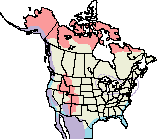

As tertiary consumers, raptors are susceptible to biomagnification of environmental pollutants. Over the years, this survey program has expanded to include other natural history aspects of the peregrine, including global contaminant issues, emerging pathogens and genetics.Ī peregrine falcon is released after being caught and processed.Ī mercury contamination study was recently completed using feathers that were collected from Assateague peregrines during autumn migrations between 2009-2015. Approximately 20,000 peregrine falcons have been counted during the Assateague survey with an additional 5,746 captured for scientific research. Accessible peregrines are captured, banded, processed according to current protocols, and then released. As part of this effort, researchers established an annual peregrine falcon survey at Assateague Island National Seashore nearly 50 years ago.ĭuring each survey, all raptors observed are recorded according to species, time, location and activity at the time of sighting. During a renewed period of conservation efforts to help restore bird populations, the Department of the Army initiated a research program to develop new technologies to help monitor highly migratory wildlife species. In 1970, the peregrine falcon was federally listed as an endangered species. Chemicals ingested by prey animals accumulated in the tissues of the falcons, causing a cascade of reproductive health problems including the formation of thin eggshells. Widespread use of the pesticide dichloro-diphenyl-trichloroethane (DDT) after World War II resulted in sharp declines of the peregrine population. Therefore, Assateague Island provides scientists with an ideal location to conduct long-term research studies on these traveling birds of prey.Ī peregrine falcon in processed by biologists. While it is rare for peregrines to nest on this barrier island, the undisturbed beaches and expansive coastal dune habitats provide an ideal resting stop during fall migration. The migratory route of many tundra peregrine falcons passes directly over Assateague Island. While certain populations are resident, others migrate up to 15,000 miles annually to winter in warmer climates. Peregrine falcons primarily prey on birds, and have been documented feeding on at least 450 different bird species. They prefer to nest on cliffs and ledges, but will use urban structures including transmission towers, skyscrapers, and bridges. Peregrine falcons are widely distributed, found on every continent except Antarctica. Underwings display a uniform gray-and-white pattern. Characteristic adult plumage is marked by dark gray upper wings, crown, and a unique dark “mustache” around the beak. That being said, juvenile peregrines can be categorized as being some shade of tan or brown. Juvenile coloration varies widely between light-colored markings to heavily-and-darkly markings with a dark brown cap.


Like other raptors, peregrine falcons are sexually dimorphic with adult females growing larger than males. They are a large member of the falcon family with a wingspan of 3.5 feet. Peregrine falcons ( Falco peregrinus) are the fastest member of the animal kingdom, reaching dive speeds greater than 200 mph. In future versions of the Rare Species Explorer, we hope to incorporate natural community fidelity ranks for each taxon.A peregrine falcon takes off from the beach at Assateague Island National Seashore. In many cases, the general habitat descriptions should provide greater clarity and direction to the surveyor.
#MAP OF PEREGRIN FALCON HABITAT FULL#
Natural communities are not listed in order of frequency of occurrence, but are rather derived from the full set of natural communities, organized by Ecological Group. Natural communities are not listed for those species documented only from altered or ruderal habitats in Michigan, especially for taxa that occur in a variety of habitats outside of the state. For certain taxa, especially poorly collected or extirpated species of prairie and savanna habitats, natural community lists were derived from inferences from collection sites and habitat preferences in immediately adjacent states (particularly Indiana and Illinois). In most cases, at least one specimen record exists for each listed natural community.


 0 kommentar(er)
0 kommentar(er)
